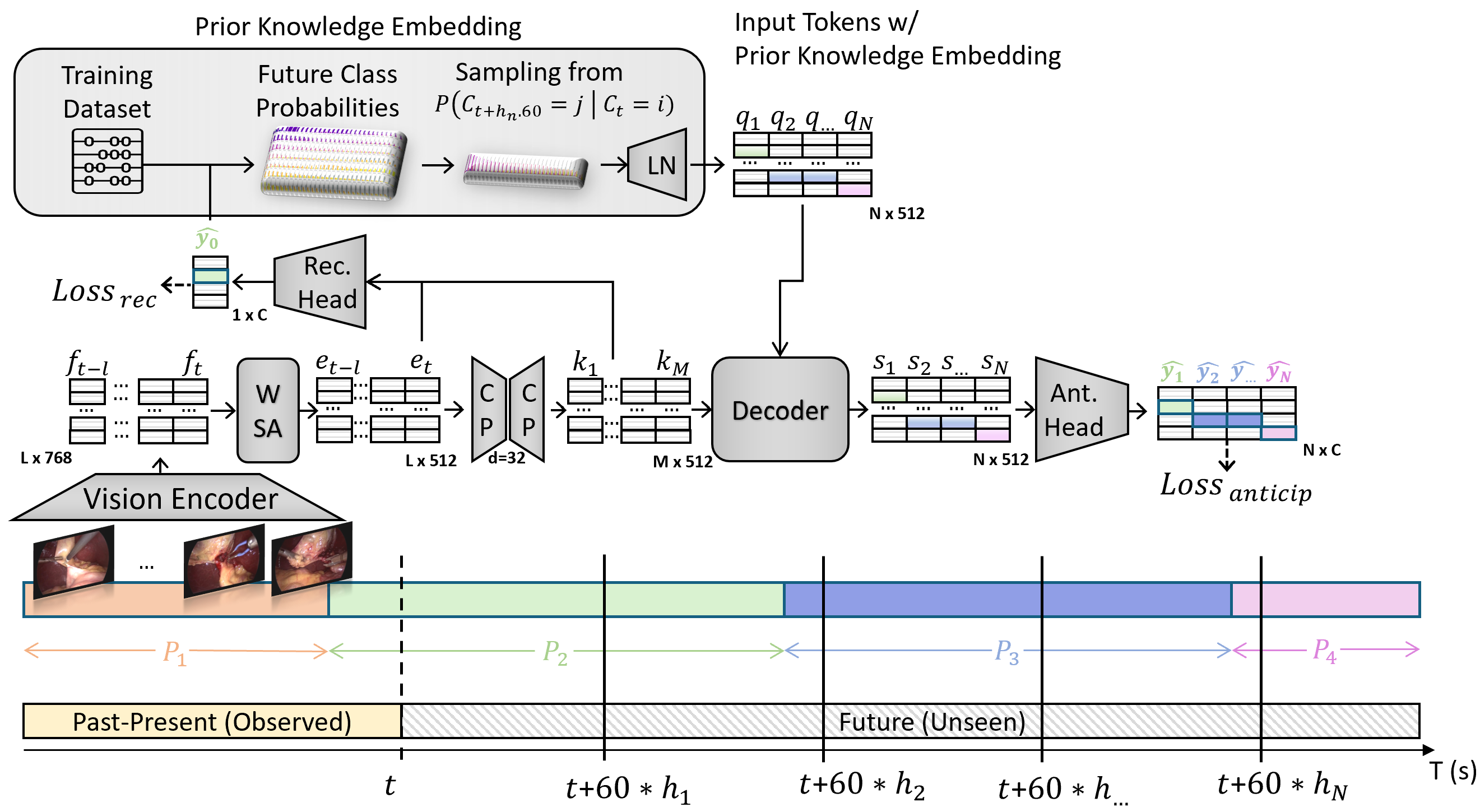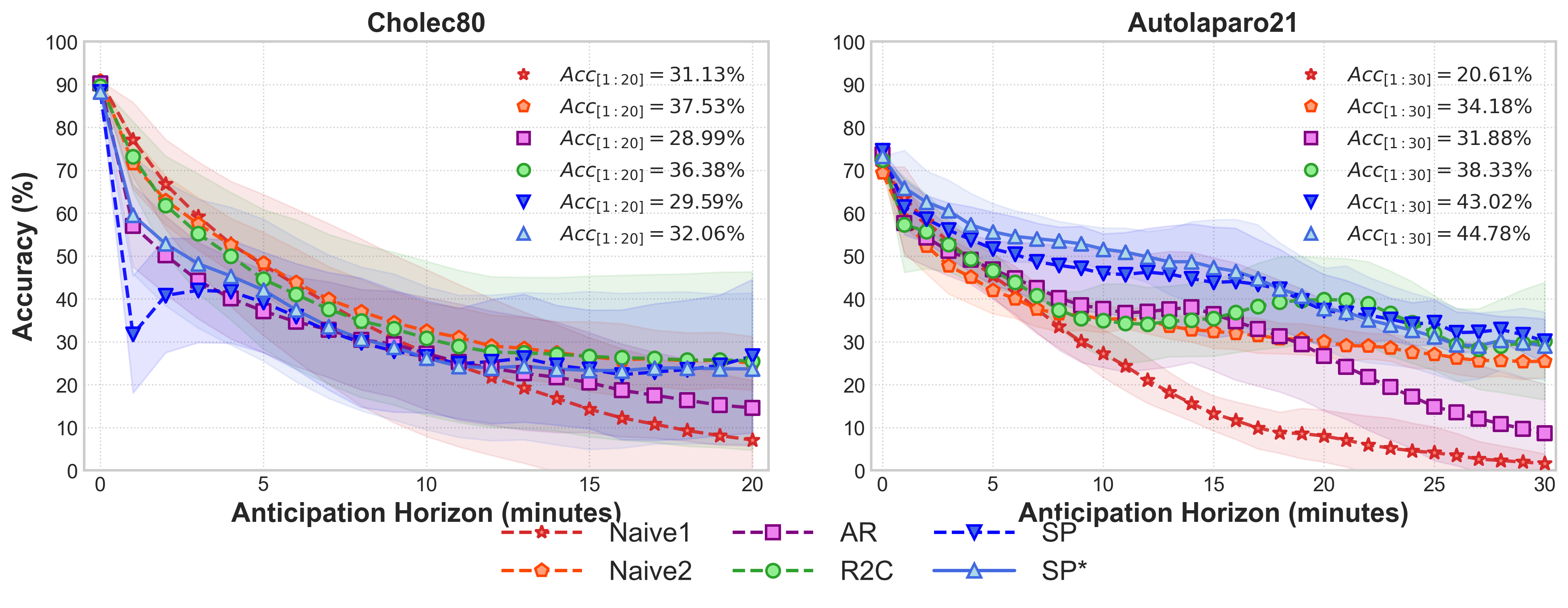Purpose
While existing approaches excel at recognising current surgical phases, they provide limited foresight and intraoperative guidance into future procedural steps. Similarly, current anticipation methods are constrained to predicting short-term and single events, neglecting the dense, repetitive, and long sequential nature of surgical workflows. To address these needs and limitations, we propose SWAG (Surgical Workflow Anticipative Generation), a framework that combines phase recognition and anticipation using a generative approach.
Methods
This paper investigates two distinct decoding methods—single-pass (SP) and auto-regressive (AR)—to generate sequences of future surgical phases at minute intervals over long horizons. We propose a novel embedding approach using class transition probabilities to enhance the accuracy of phase anticipation. Additionally, we propose a generative framework using remaining time regression to classification (R2C). SWAG was evaluated on two publicly available datasets, Cholec80 and AutoLaparo21.
Results
Our single-pass model with class transition probability embeddings (SP*) achieves 32.1% and 41.3% F1 scores over 20 and 30 minutes on Cholec80 and AutoLaparo21, respectively. Moreover, our approach competes with existing methods on phase remaining time regression, achieving weighted mean absolute errors of 0.32 and 0.48 minutes for 2- and 3-minute horizons.
Conclusion
SWAG demonstrates versatility across generative decoding frameworks and classification and regression tasks to create temporal continuity between surgical workflow recognition and anticipation. Our method provides steps towards intraoperative surgical workflow generation for anticipation. Project: https://maxboels.com/research/swag.



